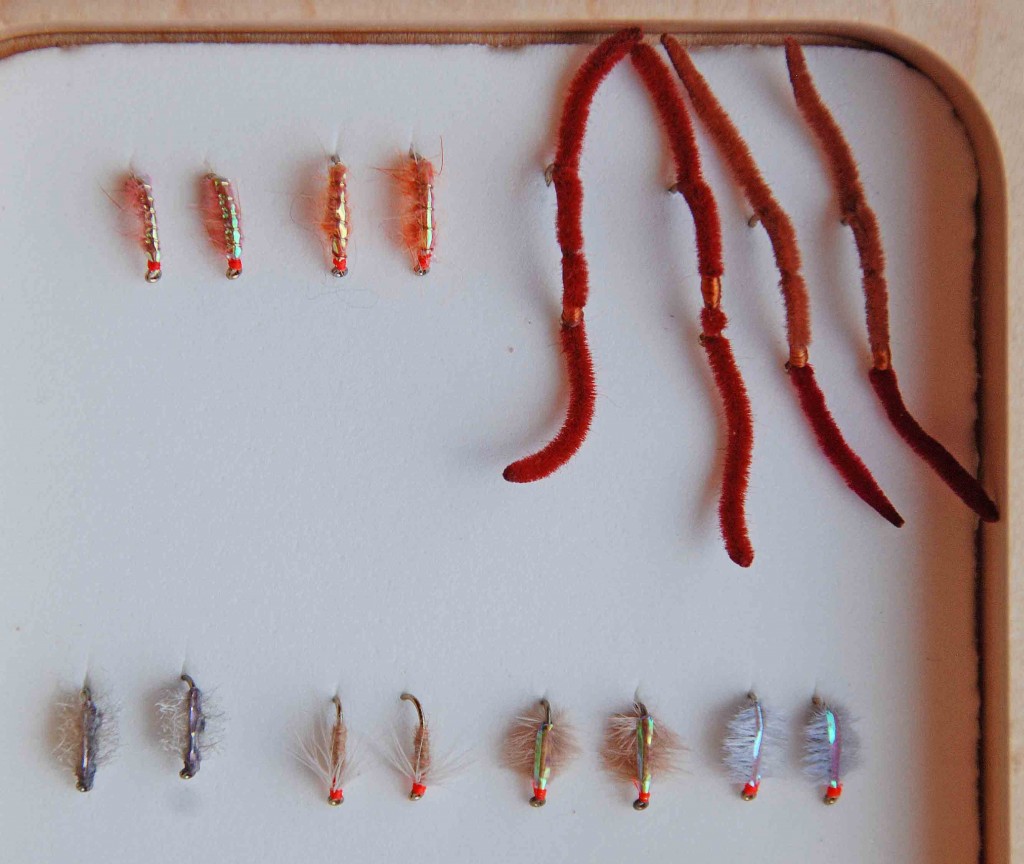Living on Tungsten Time

About a month ago, the Bureau of Reclamation was betting heavily that this was going to be another low-water year. Snow pack surveys supported this theory, although it didn’t explain why the Bureau insisted on maintaining record-high lake levels throughout the month of April. It is common for this river drainage to receive abundant moisture in May and June; and when you have a full lake and lots of late-season moisture you have to dump water—quickly.
This brings on “tungsten time.” For the next few weeks, we’ll all need a bit more tungsten putty or split shot to get our nymphs to the bottom. While we’re not happy that our precious dry fly fishing has been washed downstream with the moss and other streamside debris, tungsten time oftentimes offers some of the best nymph fishing of the year. Higher flows dislodge lots of sow bugs, scuds, and aquatic worms, and Bighorn River trout gorge themselves on these high-protein delicacies. If you’re using the right amount of weight, have the right fly, and are fishing the correct runs, you can do very well.
Let’s talk about sowbugs for a moment: Sowbugs are crustaceans that belong to the genus Isopoda. Unlike scuds, sowbugs are flattened in appearance, with their legs extending out on the sides of their body. They prefer cool, clean, alkaline water and abundant weed growth. Bighorn River sowbugs are generally a dark gray color on the back, and light gray on the underside. Hook sizes 14, 16, and 18 hook match the Bighorn sowbugs well.
There are many different sowbug patterns. Almost all of them are simple to tie. The Ray Charles pattern is one of the favorite patterns here on the river. It is tied with a body of tan or gray ostrich herl, and a strip of pearlescent mylar over the back. The ostrich herl does a good job of imitating the legs of the natural sowbug, and the material moves well in the water. Some tyers include a wrap or two of light, gray hen hackle in front of the herl for extra movement and an increased “halo effect.” Some patterns even have a tungsten bead to help the fly sink faster. Sowbug patterns are sometimes tied with bright pink or orange dubbing or ostrich herl. I suspect that most of the fish taken on these flies are mistaking the fly for a trout egg.
San Juan worms have really taken off during the last water flow increase. The traditional pattern tied with ultra chenille is probably the best, but wire-bodied or floss-bodied flies are also effective, and they sink fast. This time of year, it’s not unusual to catch trout that are so stuffed with aquatic worms that they regurgitate worms when you release them.
So Tungsten Time is not without its excitement. Water temperatures are on the rise, and there’s a lot of food coming downstream. Just be careful where you try to anchor your boat. Or better yet, hire a guide.